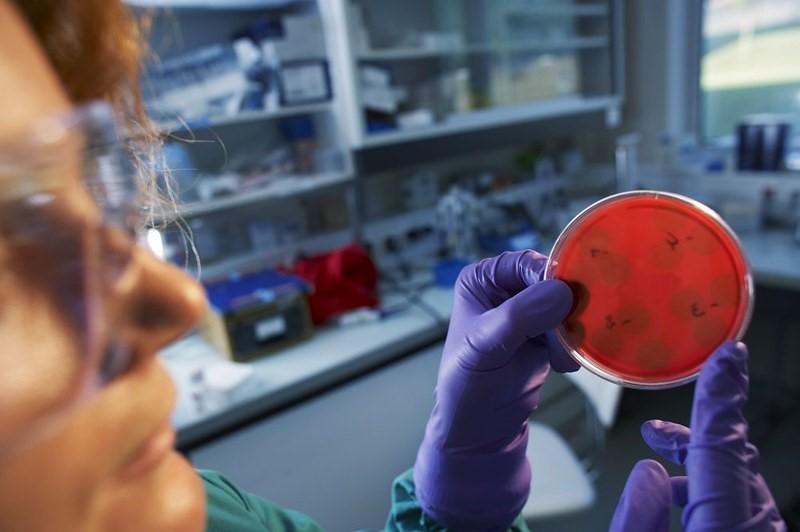A new study by a team of US researchers highlights the role that diagnostic stewardship can play in reducing antibiotic use in hospitals.
The study, published this week in JAMA Pediatrics, found that a national quality improvement collaborative to reduce the ordering of blood cultures to evaluate for bloodstream infections in children in pediatric intensive care units (PICUs) was associated both with fewer blood cultures and less broad-spectrum antibiotic use, without increasing the risk of bacterial sepsis or affecting mortality, hospital readmission, or the amount of time spent in the hospital.
The study authors say the multicenter diagnostic stewardship collaborative is the first, to their knowledge, to successfully reduce blood cultures and antibiotic use.
"Our study confirms that diagnostic stewardship is a promising strategy to augment antimicrobial stewardship programs and reduce antibiotic overuse," they wrote.
Blood cultures and unwanted consequences
The study evaluated the Bright STAR (Testing Stewardship for Antibiotic Reduction) collaborative, a quality improvement program implemented at 14 US PICUs in 2017.
Guided by a steering committee of experts and the results of a pre-implementation assessment survey, each PICU created unique clinical decision support tools to guide blood culture practice. Implementation plans included educational sessions, electronic clinical pathways, and targeted emails to PICU clinicians.
The aim of the intervention was to standardize practice and reduce variability in the decision to order blood cultures in PICUs, to highlight patient safety considerations, and to ultimately reduce blood cultures in children at low risk of sepsis. While blood cultures are the gold-standard diagnostic test for sepsis caused by a bloodstream infection in critically ill children, ordering them can lead to a host of unwanted consequences, according to senior author Aaron Milstone, MD, MHS, a pediatric infectious diseases specialist at Johns Hopkins University School of Medicine.
"Patients in the PICU are usually the sickest of the sick, and you want to do everything you can to help," Milstone said in a Johns Hopkins press release. "But when you perform a blood culture, anything can grow—whether it's the reason behind the concerning symptom or possible contamination of the sample. Collecting a blood culture when it's not needed can lead to unnecessary antibiotic use, unwanted side effects from additional medications, and additional blood tests."
To evaluate Bright STAR, researchers analyzed data from each participating PICU and from the Children's Hospital Association Pediatric Health Information System, comparing the 24 months before and 18 months after implementation at each site. The primary outcome was blood culture rates (per 1,000 patient-days per month).
Secondary outcomes included broad-spectrum antibiotic use (total days of therapy and new initiation of broad-spectrum antibiotics), rates of central line-associated bloodstream infection (CLABSI), Clostridioides difficile infection, mortality, readmission, length of stay, sepsis, and severe sepsis/septic shock.
Fewer blood cultures, less broad-spectrum antibiotic use
Across the 14 PICUs, the blood culture rate fell from 149.4 per 1,000 patient-days per month pre-implementation to 100.5 post-implementation—a 33% relative reduction (95% confidence interval [CI], 26% to 39%). The rate of broad-spectrum antibiotic use declined from 506 to 440 days per 1,000 patient-days/month, a 13% relative reduction (95% CI, 7% to 19%), and the broad-spectrum antibiotic initiation rate fell from 58.1 to 56.3 initiations per 1,000 patient-days/month, representing an 8% relative reduction (95% CI, 4% to 11%).
After program implementation, the CLABSI rate across the 14 sites fell by 36% (95% CI, 20% to 49%), dropping from 1.79 to 1.14 per 1,000 central-line days/month, while C difficile rates remained similar. PICU mortality rates, length of stay, readmission (for hospital and PICU), and severe sepsis/septic shock were similar before and after implementation.
An examination of 793 positive blood cultures post-implementation found that 792 were collected at the appropriate time and without any delay that might have been caused by recommendation to avoid blood culture in certain settings.
"These findings suggest that multidisciplinary efforts to standardize blood culture collection and avoid unnecessary testing in the PICU can be done successfully and safely in diverse settings and that reducing blood culture use is associated with a reduction in broad-spectrum antibiotic use," the authors wrote.
Milstone and his colleagues say the Bright STAR strategy may be especially useful in environments like PICUs, where children often have non-specific signs and symptoms of infection and frequently receive empiric antibiotics without definitive proof of a bacterial infection. But they note that the focus of the program is on clinically stable patients in whom bloodstream infection and sepsis is considered unlikely.
"Both Bright STAR as an overall program, and each site's clinical tools, intentionally make no recommendations to avoid blood cultures in patients with signs or symptoms of suspected sepsis," they wrote.























